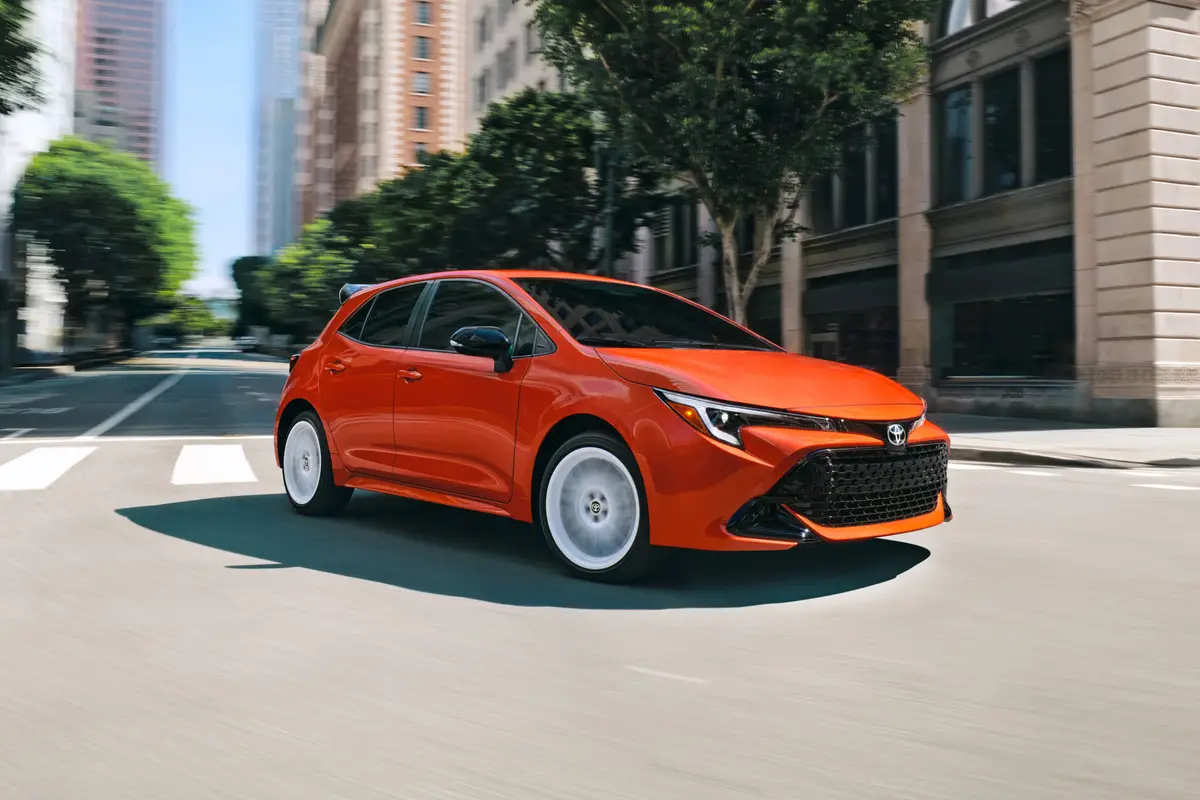Cincinnati.com's view
There must have been a run on Hara-kiri swords the day Consumer Reports (CR) released its evaluation of the new, third-generation 2001 Mitsubishi Montero.
In case you were out in space, the magazine issued a press release in June labeling the Mitsubishi Montero Limited “unacceptable.” The subhead on the announcement, which the media dived upon, was “SUV tips up severely in our emergency avoidance-maneuver test.” The report is available in full at consumerreports.org. The magazine tested on the same occasion, with the same protocol, the Dodge Durango, Ford Explorer, GMC Envoy, Jeep Grand Cherokee, Nissan Pathfinder, and Toyota 4Runner; none of these exhibited untoward behavior.
What do they mean by “tip up”? The report is illustrated, as was the news release, with dramatic photos and videos showing the Montero with two wheels high in the air. CR said it was their experts’ opinion that, without the outrigger training wheels attached, the Mountain Man would have flipped onto its side or back in some of the drills.
The maneuver that provoked all this drama occurred while negotiating a slalom course simulating the kind of maneuver we’ve all made at one time or another to avoid a looming pothole or a darting animal or child.
The driver first zigs left – as if to avoid a collision – and then quickly back to the right, as if to get back into his lane. When the Montero came back right, it pulled two wheels completely off the ground in 8 of 9 runs, and not just a little.
Mitsubishi of course damned the testing procedure, saying it was unrealistically demanding. It was, after all, conducted at approximately 36.7 mph. After watching the videos, I don’t think it was a particularly outlandish test, nor do I think 36.7 is an unreasonable speed. When the speed was raised to 37.7 mph, and on up to 39.9 mph, there was no doubt in my mind that the vehicle would have flipped and mostly likely gone into a roll worthy of a Bruce Willis movie.
Look at the videos, if you will, and make your own determination as to the relevance and fairness; remember the other 6 vehicles named above did not lose their contact with the Earth in the same exercise.
With that as background, I was eager to test the Montero. It arrived just a couple of weeks after the CR firestorm. (Note that the Mitsubishi Montero Sport is a different animal – it’s the company’s midsize SUV; this is the big boy.)
It’s an impressive-looking beast, recalling older Toyota Land Cruisers with its “muscular” bulges that border, in this case, on pudginess. The paint job is outstanding, and, with the contrasting bodyside cladding, it’s a very eye-catching machine, indeed, especially in the go-for-broke Limited form Mitsubishi supplied me. (The less-luxurious XLS series retails for about 4 grand less.)
It’s a dual-mission machine, Mitsu says, designed for both social climbers and mountain climbers, i.e., incorporating both rugged ness and luxury. It certainly is posh; the equipment list is comparable to that of a luxury-class sedan.
As for ruggedness, that remains to be seen, for this is a complete departure in chassis engineering from what came before. Like so many other makers, Mitsu has gone to a more car-like unibody construction, for greater comfort and better handling.
Compared to the Gen II machine, the new Monty has a 2.2-inch longer wheelbase and a 3.1-inch wider stance. Both of these changes should increase stability.
The National Highway Traffic Safety Administration has not tested a 2001 Montero yet. The Insurance Institute for Highway Safety has subjected one to a 40-mph offset frontal barrier test. Montero got an overall rating of Acceptable, the second-highest, for occupant protection, compared with its peers.
Overall, the Montero was behind the BMW, Mercedes, Toyota and Lexus SUVs, but ahead of those from Nissan, Ford, Dodge, Land Rover, Jeep and Isuzu/Honda. Monte as front AND side air bags for driver and co-pilot.
In the Institute’s series of 4, 5-mph bumper tests, the Montero came in second-last, with an astonishing $9,159 worth of damage.
Not wishing to be a martyr to my profession, I approached the road test of the Monty with more than usual discretion. I must say, its handling was peculiar, in even run-of-the-mill maneuvers. When I took a corner in any but the most sedate fashion, the rear end seemed to have an indecisive waddle, as if it were shifting to one side, and then the other. It’s the kind of feeling you get when the rear tires are severely underinflated – too much compliance – but I had checked the Monty’s, and they were spec-on. (This vehicle lists five different inflation pressures, depending on load and speed, including running with a full load at more than 100 mph. I don’t THINK so . . . )
Mitsubishi has gone to a new independent, multi-link rear suspension this year, and it pretty obviously needs some sorting out.
A pity, really, because there’s so much to like. Ride quality was very good even over rough roads. The Montero felt indomitable, and the chassis seemed bullet-proof. Both roll and pitch motions are well-controlled. At highway speeds on reasonable surfaces, the Monty felt stable and was reasonably quiet, even though it displaces a great deal of air and the aggressive tires make their presence known.
The engine is a 3.5-liter, single-overhead-cam V-6. It’s rated at 200 hp (@5,000 rpm) and 235 foot-pounds of torque (@3,000). It prefers premium unleaded, despite its relatively modest specific output. EPA estimates are 13 mpg city, 18 highway. My tally was 13.8, with some 4-wheelin’ and lots of country running.
In the Limited, the engine is coupled to a 5-speed automatic transmission with the ubiquitous “Sportronic” feature that lets one shift manually by tipping the console-mounted lever fore and aft. Having five ratios helps keep the engine working hard and provides more-than-adequate sensations of liveliness under varying circumstances. The box shifted quickly and smoothly.
The Limited has what Mitsu calls Active Trac, a combination full-time/part-time 4WD mechanism, lever selected. You can operate it as a rear-drive-only machine, or switch to 4WD High with open center differential, in which position you can run all day, regardless of road surface. Things get rough, lock the center diff with another easy push of the floor-mounted lever. Things get scary, you have a low range to bail you out.
Actuation was exceptionally fast and smooth. The XLS series has a 4-speed automatic transmission and part-time 4WD, with low range.
Large discs front and rear argue for good braking and such was the case. They brought the nearly-5,000-pound load to a stop in creditably short distances, and the antilock mechanism functioned well on both pavement and gravel.
The Montero has serious fog lamps, whose brightness approaches that o f driving lamps. It also has a handsome color display, mounted top-center in the dash, that gives date and time, compass heading and a diagram of heating/cooling modes. It was hard to read in bright sunlight, and I wonder why they didn’t see fit to include more functions, such as radio details and parameters otherwise ignored, such as oil temperature and pressure and transmission temperature.
The Infinity stereo was one of the best, with very fine overall tonality and exceptional tuner response. It has seven speakers and 175 watts of power in the Limited.
Base price on the machine I tested was $35,497. Only one option was added – a $900 rear air conditioner, which, with a 151-cubic-foot interior, seems a pretty good idea. Total, with freight, was $36,942. The analytical firm Edmunds says Montero Limiteds are typically going for about $3,000 under sticker. Thanks, CR.
Part of the “Gannett News Service.”
Latest news


2026 Genesis GV70 Review: Small Changes, Still Good

